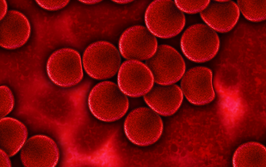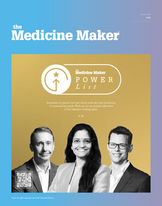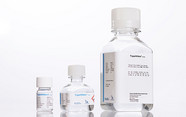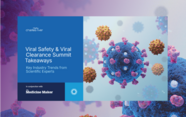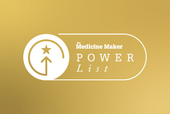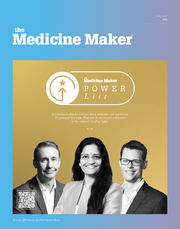Gene Therapy Successes in Ophthalmology
Ophthalmology is quietly becoming gene therapy’s next big frontier. Here’s how the science, the patients, and the regulations are aligning.
Daniel Eisenman, James Riddle | | 8 min read | Opinion

By Daniel Eisenman, Executive Director of Biosafety Services, and James Riddle, Senior Vice President, Global Review Operations, both at Advarra
Let’s talk about a patient called Eleanor.
With her vibrant energy and razor-sharp wit, Eleanor could easily pass for someone decades younger. The 90-year-old lifts weights and outlasts many 20-somethings in her spin class. Yet, recently, Eleanor’s trademark spark has begun to fade. She has been diagnosed with age related macular degeneration (AMD) and the only treatment option is a regimen of eye injections of anti-VEGF drugs every three weeks to block the growth of abnormal blood vessels. Without them, she risks slipping into darkness.
And then there is Jack.
At just eight years old, Jack was battling the effects of retinitis pigmentosa (RP), a rare genetic disorder caused by a faulty RPE65 gene that gradually robs patients of their sight – often leading to blindness by adolescence. During a simple obstacle course test, Jack struggled to find his way, bumping into large paper stop signs and other soft obstacles. What should have taken less than 30 seconds to complete took Jack more than seven minutes.
And there is thirteen-year-old Antonio, who lives with a rare genetic disorder called dystrophic epidermolysis bullosa (EB), which causes his skin to blister and tear with painful ease. The disease causes the corneas of his eyes to be covered in scar tissue, effectively blinding him. After an initial surgery on his left eye to remove the scar tissue, lesions returned, and visual acuity worsened to 20/400. Eventually, blisters began to develop in his right eye, too. Despite a second surgery and a series of aggressive treatments, the lesions continued to return.
Eye disease is devastating for anyone, but breakthroughs in cell and gene therapy mean that patients now have hope for permanent, curative treatments. Instead of enduring repeated painful injections or surgeries, gene therapies can deliver working copies of genes that restore the missing or mutated proteins.
REGENXBIO’s single-dose investigational gene therapy, ABBV-RGX-314, uses an adeno-associated virus (AAV) vector to deliver a gene to cells in the retina that may produce an anti-VEGF protein. Clinical trials underway show promise in treating wet AMD so patients like Eleanor have a way to the light.
Jack got his chance with a clinical trial. The investigative gene therapy helped him enjoy all the joys of childhood – from video games to baseball – and now he continues living a full life as a teenager. Spark Therapeutics' Luxturna, the first FDA-approved gene therapy for a genetic disease, delivered a healthy copy of the RPE65 gene, offering a potential cure for all RP patients. In fact, after receiving one injection in one eye (the other was covered), Jack aced the original obstacle course that once vexed him. He later received an injection in each eye and hasn’t slowed down since.
Antonio’s story also has a happy ending. Krystal Biotech’s Vyuvek was FDA-approved as a gel for topical application to the skin of EB patients, but the FDA cleared an Investigational New Drug (IND) application for compassionate use to reformulate Vyjuvek as eye drops to treat his disease after one last surgery to remove scarring. Within three months, and 19 doses, Antonio’s corneal epithelium was fully healed. At eight months, assessments revealed complete epithelial healing and imaging found no signs of corneal scarring, recurrence, or other abnormalities. Antonio also demonstrated better visual acuity after Vyjuvek treatment, improving from 20/400 to 20/25 at eight months post treatment.
As for Eleanor – she has been able to avoid the frequent painful injections commonly used to treat age related macular degeneration in favour of single-dose investigational gene therapy in a clinical trial. She is back to the gym with renewed pep in her step and spark back in her smile.
Striking growth in ophthalmology research
Incredible eye disease cure stories are becoming increasingly common given how ophthalmology has emerged as one of the most promising frontiers in gene therapy.
The eye's unique characteristics and increasing research efforts are leading to promising treatments for a variety of genetic eye diseases previously considered untreatable. The potential impact is expansive, too. Once researchers establish the principle that works, the same technique can be applied to many eye diseases, not just those caused by genetic mutations. For example, gene therapy has shown promise to treat acquired retinal diseases, such as glaucoma, that have a complex origin.
Moreover, eyes are well-suited for cell and gene therapy for a variety of reasons. First, the eye’s immune system is relatively tolerant (although, in some cases, gene therapy can cause inflammation requiring steroid treatment), making it easier to introduce and maintain gene therapies. Second, it is easily accessible for diagnosis, treatment, and observation, allowing for non-invasive monitoring of treatment efficacy. Third, the eye’s unique structure allows for localized delivery of therapies to specific tissues such as the retina. And fourth, the ocular barriers separate the eyes from the rest of the body, thus limiting the immune response in the eye and protecting other tissues.
Given these conditions, it is not surprising that there were 159 gene therapy clinical trials targeting ophthalmic disorders up to the end of 2022, with the majority focusing on retinal and optic nerve disorders. While most ophthalmology gene therapies studies utilize genetically engineered viruses to deliver therapeutic genes to the eyes, in March 2025, the FDA approved the first gene-modified cellular therapy product for ophthalmology: Neurotech Pharmaceuticals’ cell therapy for an eye disease known as macular telangiectasia type 2 (MacTel). The drug, Encelto, is delivered in a tiny, implanted membrane that encapsulates a type of eye cell called a retinal pigment epithelial cell, which has been genetically engineered to express the protein ciliary neurotrophic factor. That protein helps photoreceptors in the eye survive longer, slowing the disease.
Streamlining safety reviews
Diverse technologies are being utilized under the umbrella of cell and gene therapy, but each carries different risks, for which investigators, research staff, subjects, and caregivers should be aware. Because cell and gene therapies are intended to be permanent – which is the greatest benefit for those suffering from disease – they also bear a unique risk. Additionally, there are many unique hazards associated with handling, disposal, and clean-up of cell and gene therapeutics that require special care.
For these reasons, the NIH requires Institutional Biosafety Committee (IBC) reviews in addition to FDA-mandated Institutional Review Board (IRB) committee reviews for NIH-funded cell and gene therapy trials, and for sites that have received NIH support for research. An IRB review assesses the ethics of the research (i.e., the safety of patients) while an IBC review focuses on the safety of site staff, caregivers, and anyone within proximity of the treatment environment. For example, the IBC might recommend that a caregiver/parent wear comparable protective equipment as the research staff when in contact with the child receiving a genetically modified virus via syringe.
IBC and IRB reviews must happen before the first patient is enrolled, which can delay study startup if the reviews are not handled efficiently and effectively. One easy way to streamline these important reviews is to work with a single independent organization experienced in both types of safety reviews. In addition, it is important to pre-vett sites. Sponsors and CROs can streamline IBC reviews by working with research sites that already have experience with cell and gene therapy trials, and have existing IBC registrations with the NIH. Unfortunately, some eye clinics are not aware of the IBC requirement for gene therapy research, and it can take six to eight weeks to register a site with the NIH before an IBC review can take place.
Be sure to do your homework to identify organizations with both IBC review expertise and credentialed reviewers with specific human gene therapy ophthalmology experience on their boards. Universities can be limited to the faculty members who lean more towards general scientific laboratory research rather than deep-domain or clinical specializations.
Finally, keep in mind that IBC and IRB reviews can move faster when handled by experienced review organizations versus locally administered IBC committees.
Envisioning a bright future
The cell and gene therapy market today is calculated at about $25 billion, and projected to reach $117.46 billion by 2034, growing at a CAGR of 18.7 percent from 2025 to 2034. The rapid growth is driven by an increasing burden of cancer and other targeted diseases, rapidly expanding research and robust pipeline, substantial funding by venture capitalists, and technological innovations. Ophthalmology is poised to capture the biggest share of that growth after oncology as ophthalmic drugs are anticipated to expand at a significant CAGR of 12.8 percent during this same period – especially with the growing emphasis on developing targeted gene therapies.
While growing at a rate that inspires hope, gene therapy for eye diseases is still in its infancy. Formidable challenges, including unpredictable immune responses, and long-term safety and efficacy, persist. Increased clinical research is exciting, but the industry must maintain the utmost care. Site experience with small molecules and antibodies, for instance, is vastly different compared to gene therapy expertise. Unique and significant health risks demand proper safety practices not only for patients, but everyone associated with the trial – and this starts before a single patient enrolls with the independent biosafety reviews. By investing time and resources in cell and gene therapies for ophthalmology diseases, we can envision a brighter, healthier future for all.
Executive Director of Biosafety Services at Advarra where he directs Institutional Biosafety Committee (IBC) and biosafety consulting services, helping researchers navigate regulatory requirements to ensure research is conducted safely and with minimal regulatory delay. Prior, Eisenman served as Biological Safety Officer for University of North Carolina at Chapel Hill, and the Medical University of South Carolina. He can be reached at [email protected].
Senior vice president of global review operations at Advarra. Riddle’s expertise includes large program management and growth, operational processes, development and implementation of technology solutions, and management of large Human Research Protection Programs (HRPP), Biosafety programs (IBC) and Institutional Animal Care and Use programs (IACUC). Riddle has directed numerous clients in achieving Part 11 compliance and meeting computer system validation requirements. Riddle has served on the board of the Northwest Association for Biomedical Research (NWABR) and the steering committee of the Clinical Trials Transformation Initiative (CTTI). He has also served as a site visitor for the Association for the Accreditation of Human Research Protection Programs (AAHRPP). Riddle can be reached at [email protected].



